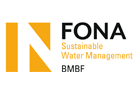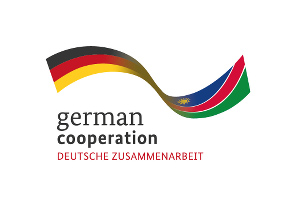Toolkits
The Technology Toolkit for Rain- and Floodwater Harvesting (RFWH Toolkit)
The RFWH Toolkit is intended to enable the introduction of the Rainwater Harvesting and Floodwater Harvesting technologies featured in the CuveWaters project to open up alternative sources of water of a quality that is adequate for the irrigation of gardens. The Toolkit is a collection of documents and additional multimedia material that supports participatory planning and realisation of rain- and floodwater harvesting infrastructures, including gardening. Developed by a cooperation of scientific and practice partners from Germany, Namibia and Kenya during the pilot and implementation phases of the CuveWaters project, the toolkit was applied and approved in several workshops in Namibia.
The RFWH Toolkit supports decision-making from the initial planning steps to the implementation of sustainable rain- and floodwater harvesting facilities, including micro-scale gardens. In doing so, it paves the way for the successful application and use of RFWH. Target groups are institutions responsible for water availability and supply, for small-scale agriculture, as well as for food security or poverty reduction on a local and regional scale. On the one hand, these institutions need general information about the RFWH technology in order to be able to decide for this kind of decentralised additional water supply. On the other hand, they need a practical how-to guide enabling them to build these facilities themselves. The toolkit provides information on how to plan, realise and maintain RFWH facilities in a sustainable way. Intended to also serve as educational material for the training of future RFWH field facilitators, it provides material they can use to inform anyone interested about RFWH and to support the planning and installation process carried out by local people in the field.
The RFWH Toolkit consists of documents (check lists, address lists, construction manuals), illustrations (decision steps, requirements) and maps (sites of the pilot plants in central-northern Namibia). On the CD, additional audio-visual material (animations of infrastructure components, interview) and a calculator for tank size is provided. The chapters of the RFWH toolkit can be downloaded separately (except for the additional material on CD, due tobig file sizes). Besides the purely English version (E), a mixed-language version is provided (English and Oshiwambo) (E+O).
Part A – RFWH Information Sheets
1. | Introduction | Introduction (E) | Introduction (E+O)
|
2. | Introduction to the Technology | Intro2Tech (E) | Intro2Tech (E+O)
|
3. | RFWH Technology Toolkit: Decision Steps and Tank Design | Decision&Design (E) | Decision&Design (E+O)
|
4. | RFWH Technology Toolkit: Gardening and Irrigation (E)
|
Part B – Construction Manuals (English version only; file sizes are 3 to 16 MB !!)
The development of the RFWH Toolkit was only possible because of the support of many people and institutions in Namibia. This final version is realised by Oliver Schulz (ISOE – Institute for Social-Ecological Research) and Alexander Jokisch (TUD – Technische Universität Darmstadt). Isaac Kariuki (OWC – One World Consultants, Kenya) contributed his immense practical and theoretical knowledge on RFWH and on teaching people. The manuals are based on his construction work in the field during workshops. Julia Röhrig (formerly at ISOE) developed the idea and the first design of the Toolkit. Andre Müller (TUD) co-developed the construction manuals. An additional document of the Water Research Commission South-Africa is included to supplement important topics of horticulture.
If you have general questions or comments please contact the CuveWaters project:
Oliver Schulz schulz(at)isoe.de
Alexander Jokisch a.jokisch(at)iwar.tu-darmstadt.de
Science communication and public relations section at ISOE:
Nicola Schuldt-Baumgart schuldt-baumgart(at)isoe.de
For technical questions on rain- and floodwater harvesting construction please contact:
Isaac Kariuki, OWC – One World Consultants oneworldcc2005(at)yahoo.com
Müller, A., Jokisch A., Kariuki, I. and Urban, W. (2015): Rainwater harvesting in southern Africa and potentials for knowledge transfer from CuveWaters research results in central-northern Namibia, Policy Brief, CuveWaters Integrated Water Resources Management, Institute for Water Supply and Groundwater Protection, Wastewater Technology, Waste
Management, Industrial Material Cycles, Environmental and Spatial Planning (IWAR), Darmstadt University of Technology (ed.), Darmstadt, Germany, 11p. Download (pdf)
The IWRM Toolkit
There are already many tools and much information supporting the implementation of IWRM. These correspond with the needs of IWRM stakeholders voiced during workshops held by the CuveWaters project in Namibia, but seem not to be widely known about. Bearing this in mind, we gathered and reviewed available information material and tools for further distribution to interested stakeholders. This instrument should boost the implementation process of Integrated Water Resources Management (IWRM) by facilitating the common understanding of the rather abstract concept of IWRM.
The IWRM Toolkit is a document containing information and links. The compilation provides
- Definitions of IWRM
- Names and addresses of international institutions working on IWRM
- References of handbooks and manuals on IWRM
- Presentations and documents centred on IWRM
- Namibian governmental documents regarding IWRM
- Web sites on IWRM in general and with a focus on Africa
- Links to several IWRM newsletters of different institutions
- International educational programmes and courses in the field of IWRM
The IWRM Toolkit has been distributed to Namibian stakeholders, but provides valuable information for other countries and regions, too. The Toolkit has been integrated into the official Namibian IWRM homepage of MAWF at www.iwrm-namibia.info.na (see the ‘Gallery’ section).



